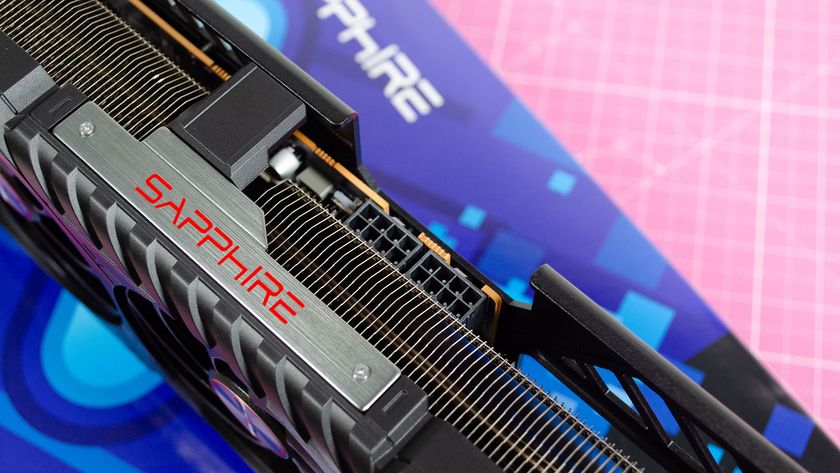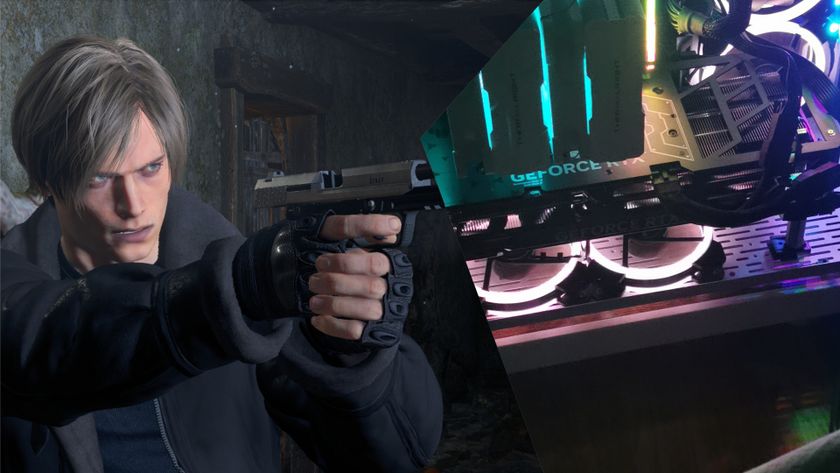Asus GeForce GTX 590
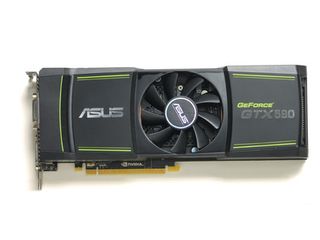
Nvidia has been the market leader in graphic card technology for so long, when it says it's reached the pinnacle of engineering with the fastest single-PCB (printed circuit board) graphics card it's ever made, you sit up and take notice. It's quite a boast, and it sounds amazing on paper - one board with two of the most powerful GPUs Nvidia has ever made combined on it.
However, compromises have had to be made to get the chips to run happily on a single card, and to stay within the 375W limit imposed by a pair of eight-pin PCI-e connectors and the motherboard PCI-e bus. That means we don't quite have a pair of the GPUs ripped straight out of Nvidia's flagship single-GPU card, the GTX 580.
Instead of the core clock of 772MHz and a shader clock of 1,544MHz, the GTX 590 houses a pair of chips running at a seriously toned-down 607MHz core clock and 1,215MHz shader clock. The memory clock has been dropped from 2,004MHz to 1,707MHz.
Read TechRadar's full Asus GeForce GTX 590 review
Sapphire Radeon HD 6950
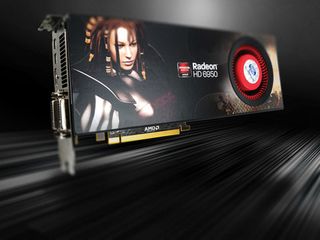
The Sapphire Radeon HD 6950 appears to be the finest graphics card AMD has produced in a long time. In the sub-£200 market, it's as good as you're going to get, and it's a graphics card that offers much more than any of the opposition in its price bracket. The HD 6950 comes close to the HD 6970 and the GTX 570 in its plain state.
Get daily insight, inspiration and deals in your inbox
Sign up for breaking news, reviews, opinion, top tech deals, and more.
The 2GB GDDR5 frame buffer means it can more or less keep pace with Nvidia's secondtier Fermi card, although it lags behind slightly for the most part. It does the same with the HD 6970, but that's to be expected from a card that's so much cheaper.
The sub-£200 price tag is a fantastic psychological coup, making this an affordable yet powerful option. That impressive performance is all down to the Cayman GPU. As we've already mentioned, the Cayman contains the same core as the GPU powering the more expensive HD 6970, though with a lower clockspeed and a few other components switched off at a software level. This leads to a problem...
Read TechRadar's full Sapphire Radeon HD 6950 review
HIS Radeon HD 6970
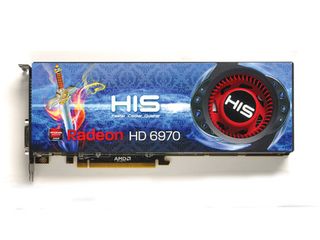
AMD's fastest single-GPU model is a tough one to recommend. It's certainly the quickest AMD has released - the big problem is the second-tier card the came out alongside it - the HD 6950.
The Cayman XT at the heart of the HD 6970 is essentially the same GPU you'll find paired in the Antilles chip of the dual-GPU HD 6990. It's clocked faster than the stock specs of the Antilles, but thanks to the Antilles Unlocking Switch (also known as the Screw Your Warranty Switch by those who choose to use it), the HD 6990 can run with its GPUs at the same speed as the HD 6970.
You can get two HD 6970s for about the same as one HD 6990. So far, so good, but what of the HD 6950 we mentioned?
Read TechRadar's full HIS Radeon HD 6970 review
Asus Radeon HD 6990
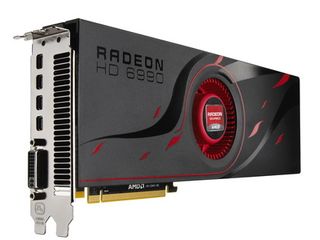
AMD pipped Nvidia to the post, releasing its dual-GPU, top-end graphics card a few weeks before the GeForce GTX 590. The HD 6990 is the fastest single-PCB graphics card the Texan brand has ever made, and houses two of the cores from its current fastest single-GPU card - the HD 6970.
The Cayman XT from that card has been doubled up and redubbed 'Antilles', and comes with slower clock, shader and memory speeds out of the box. You're not taking as much of a hit in clockspeed as with the GTX 590's GPUs, but that's because the Cayman XTs run a little slower than the GF110 GPUs in the GTX 580s in the first place.
There is a key difference here, and that comes from the little Antilles Unlocking Switch. Like the Cayman-powered cards that came before it (the HD 6950 and HD 6970), the HD 6990 comes with a dual-BIOS switch hardwired into the PCB. This comes with an attractive yellow warning sticker covering it, which warns you that as soon as you flick the switch, you effectively invalidate your warranty.
Read TechRadar's Asus Radeon HD 6990 full review
The award winners
Most of the cards we tested here do the job well, and upgrading your PC with any of them will give a serious performance boost. However, there are a couple that you should avoid to get the best possible 3D graphics on your PC, and there are others like the Zotac GeForce GTX 580 that stand out from the crowd.
Things become a little more confusing when you consider using multiple graphics cards in SLI or CrossFire mode. This allows two or more cards to work together to boost performance. Although it might seem slightly unintuitive, it can be cheaper to buy two graphics cards to get the same performance as one expensive card.
If you're really after the best graphics and your computer can handle it, then this is the way to go.
Editor's choice
Zotac GeForce GTX 580
The GeForce GTX 580 is Nvidia's flagship card for a reason - its performance in our tests was extremely impressive, and it can handle the latest games and 3D content with remarkable ease. It might be a bit on the expensive side for a graphics card, but it's money well spent. If you have the budget and the space to spare on your motherboard, then a pair of GeForce GTX 580s will serve you well and effectively future-proof your PC for many years to come.
Verdict: 5/5
Value award
Sapphire Radeon HD 6950
While the GeForce GTX 580 has the best performance for a single card, the Sapphire Radeon HD 6950 easily wins the best value award. On its own it's a great performance card, but when you also take into account the overclocking potential of this graphics card, you have a fantastic product for under £200. Upgrading to 3D is expensive enough, so it's heartening to see such good value for money.
Verdict: 4.5/5
- 1
- 2
Current page: Four more graphics cards to choose from
Prev Page Top graphics cards for 3D gaming: 8 reviewed